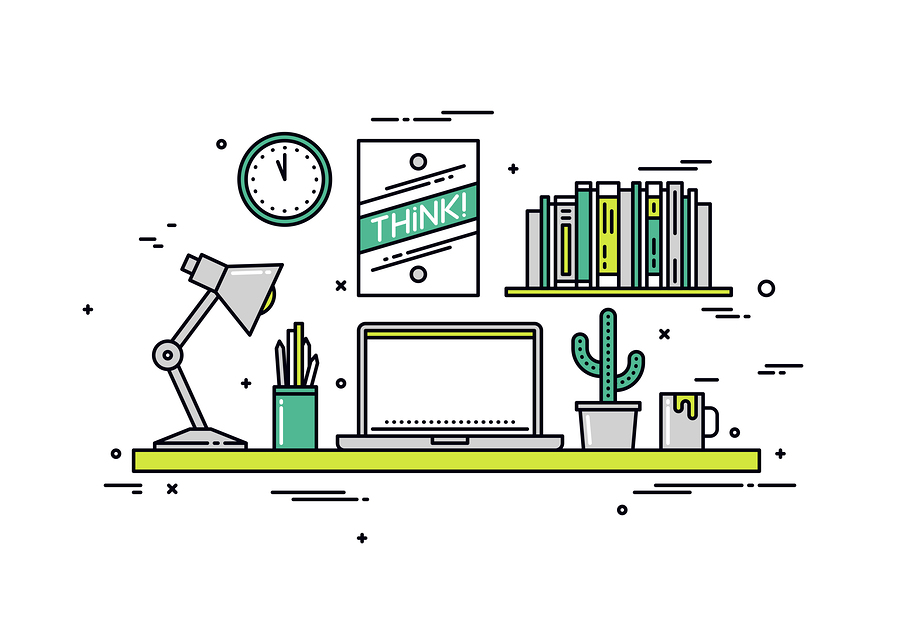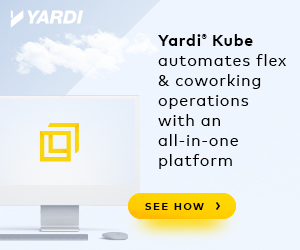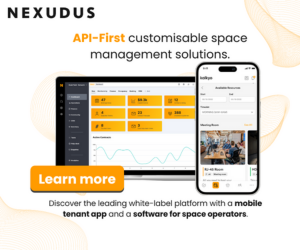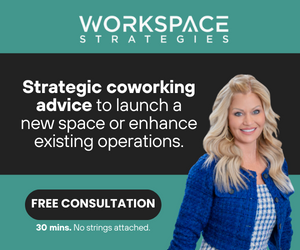As work styles have changed, workspace design has also changed; and it goes beyond ditching the cubicle and adopting ping-pong tables.
Truth is that even though there’s a more casual approach to work and doing business, professionals remain as concerned about getting their work done as ever…they’re simply not so concerned about where and when they get it done.
With habits of work different than years ago and with new technology in the picture, workspaces have had to adapt their design to fit the users’ needs. Below, you’ll find 4 design elements that we believe flexible workspaces should have in order to be successful and keep a client base flowing.
New Technology
We don’t mean computers and WiFi; we mean smart technology, IoT, and artificial intelligence. Though you might think that as an operator you shouldn’t be too concerned about technological innovations, reality is that the technology you offer in your space can either make or break you. From smart doors and lighting, to a system or bot that can ease the process of booking meeting rooms and requesting help, technology can enhance a client’s experience or have them running out the door (that needs a lot of pushing and pulling to get to open).
Versatile Furniture
Versatile furniture can help give more ‘flexibility’ to flexible workspaces. It’s furniture that isn’t mounted to a wall or panel, furniture that can be easily moved around and rearranged to suit different needs at different times. It’s desks that can be turned into standing desks, chairs that can be height-adjusted, desks that have storage or connectivity compartments, and also screens that can be placed, taken off, and stored quickly.
Private Space
Shared workspace isn’t synonymous with open space, and there’s nothing that says walls deter creativity and productivity. We recently talked about why hybrid models are necessary in our industry and flexible workspaces need to provide both the collaborative and the private areas to get work done. Private spaces are necessary for members to take a call, have a quick meeting, or simply somewhere whey they can go to concentrate on more demanding tasks.
Plants
Plants are a must in workspaces for various reasons. In terms of well-being, plants help clean the air, contributing to less stress, anxiety, and overall sickness. They’re also visually appealing and can help trigger emotional connections to the workspace. Research has shown that employees who work in environments with natural elements report a 15% higher level of well-being, are 6% more productive and 15% more creative. And, particularly important for shared workspaces, when placed strategically, plants can help reduce noise levels.
Of course, there are various other design elements that need to be taken into consideration, like space planning, decoration, and materials; but the above four allow for workspaces to be dynamic and adapt to changing needs while also providing clients with the right environment to get their work done.

 Dr. Gleb Tsipursky – The Office Whisperer
Dr. Gleb Tsipursky – The Office Whisperer Cat Johnson – Coworking Marketing Maven
Cat Johnson – Coworking Marketing Maven Angela Howard – Culture Expert
Angela Howard – Culture Expert Drew Jones – Design & Innovation
Drew Jones – Design & Innovation Andrea Pirrotti-Dranchak – Competitive Advantage
Andrea Pirrotti-Dranchak – Competitive Advantage Jonathan Price – CRE & Flex Expert
Jonathan Price – CRE & Flex Expert Jeremy Fennema – Tech Innovation Alchemist
Jeremy Fennema – Tech Innovation Alchemist







